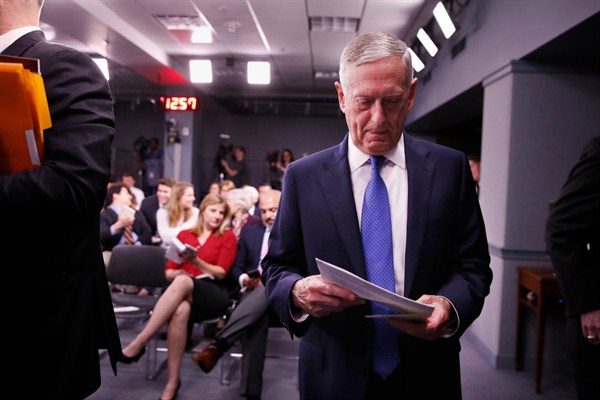As the fight against the so-called Islamic State approaches its endgame, the United States seems to be stumbling its way up the escalation ladder in Syria. Repeated U.S. airstrikes against Syrian forces and allied militias in southeastern Syria had already caused alarm that the U.S. might be drawn deeper into the country’s civil war. The downing of a Syrian warplane by a U.S. fighter jet over the weekend punctuated those concerns.
In response, Russia announced it would suspend the use of a communication channel to “deconflict” air operations over Syria—that is, avoid unintended confrontations between Russian and American jets—although the U.S. reported it was still active. Moscow also declared that all planes of the U.S.-led coalition flying west of the Euphrates River would be considered hostile and potential targets. News reports yesterday that a Russian fighter jet buzzed a U.S. reconnaissance plane over the Baltic Sea, coming within five feet of it, underscore the risk of a broader conflict, whether through miscalculation or accidental incidents.
Making the developments more troubling still, no strategic vision seems to be guiding U.S. operational decisions in Syria, to say nothing of relations with Moscow. Washington has veered from an overly sclerotic approach to one of chaotic improvisation. As a result, the U.S. is likely to be overtaken by events in the battle for post-ISIS Syria.

